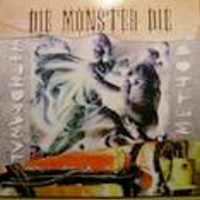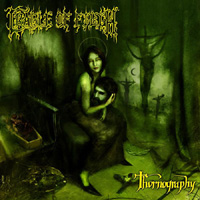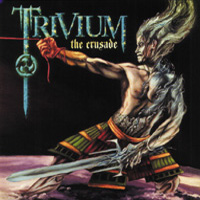 Die Monster Die
Die Monster Die
Withdrawal Method (Roadrunner)
by Stephen Thomas
Don’t ever fall asleep and wake up in the imagination of Die Monster Die‘s lead singer, Alice Cohen. Because if you do, you’ll never make it out. You’ll be cut, mutilated, burnt, dismembered and buried. Listen to the album and you’ll know what I mean.
Withdrawal Method is Die Monster Die’s first full-length release, following their Roadrunner single “Planet” with its flipside “Pennies.” Taking a cue from fellow Lollipop critic, Paul Lee, I’ll try to keep from making a fetish of labels. A critic should avoid them, a band should elude them, and in this day of cross-over mania, they’re just about irrelevant anyway. Nevertheless, for the sake of context, I’ll take a stab – maybe even a hack – at Die Monster Die and call them interdisciplinary Gothic grunge-core, with a 70’s aftertaste, like blood in the throat.
 The sound is hard-edged and tight, and the band is adept at the sudden stop to leave Alice Cohen singing naked (her voice, I mean), the double time gearshift and, the sharpest in their arsenal, the killer hook. Many of the 13 songs on Withdrawal Method are clingers – hear them once, hum them all week. “Barknuckle,” “Slumber,” and “Toad” have gotten their hooks into me already.
The sound is hard-edged and tight, and the band is adept at the sudden stop to leave Alice Cohen singing naked (her voice, I mean), the double time gearshift and, the sharpest in their arsenal, the killer hook. Many of the 13 songs on Withdrawal Method are clingers – hear them once, hum them all week. “Barknuckle,” “Slumber,” and “Toad” have gotten their hooks into me already.
The lyrics are evocative, tending towards the murderous and apocalyptic. Shards, burning pits, blades, and live burials abound. The songs rarely try for anything like cleverness, but hey, what do you want, Elvis Costello? John Fucking Updike? Anyway, it’s the kind of music where words are less important than the quality of the singer’s voice, and phili-girl frontwoman Alice Cohen is right on target here. She can move from dreamy to furious, nymph to doomsayer in the change of a chord.
Influences? Hard for me to tell. I hear everything from Black Sabbath to Mary’s Danish minus the horns. Publicists note that a previous incarnation of the band used duct-tape on stage to “mask musical insecurities.” The evidence from Withdrawal Method suggests that the band is now firmly post-duct-tape, musically secure and air-tight. There are no guitar heroics or multi-tom drum solos here, but drummer Kenny Sanders, guitarist Shawn Tracy and bassist Evan Player show off their musicianship through a range of textures and moods: mysterious, furious, ethereal, vengeful. Sure, there are one or two clunkers on the album, but in most cases, the songwriting is exceptional. So give DMD a spin.



